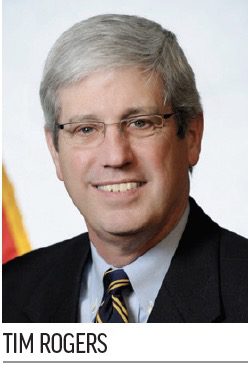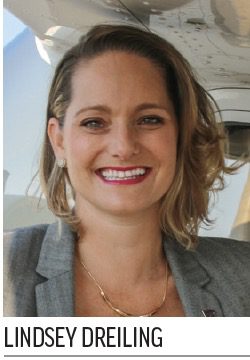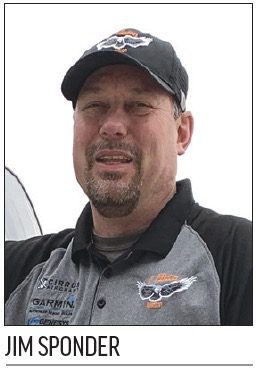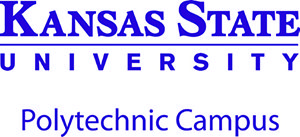Some say that when one door closes, another one opens. Turns out that when one Air Force base closes, a lot of doors can open. Salina Regional Airport (SLN), located about 175 miles west of Kansas City, is currently a thriving municipal airport fed by a busy industrial park and a satellite campus of Kansas State University. But that wasn’t always the case.
Some say that when one door closes, another one opens. Turns out that when one Air Force base closes, a lot of doors can open.
Salina Regional Airport (SLN), located about 175 miles west of Kansas City, is currently a thriving municipal airport fed by a busy industrial park and a satellite campus of Kansas State University. But that wasn’t always the case.
When Schilling Air Force Base was shuttered in October 1965, the ripple effect on the local economy was devastating. The growing Salina community, which was expected to hit 50,000 residents by 1965, instead lost 13% of its citizens. By 1970, its population was down to 37,714.
“We had just moved to Salina in 1962 and wondered if we had made the right decision,” local resident Karen Graves told the Salina Journal in 2014. “Every marginal business closed. 4,000 people left almost immediately. Even some churches shut their doors.”
|
Project: Partnership With State University Location: Salina (KS) Regional Airport
Academic Partner/Tenant: Aviation Degrees Offered: 4-year programs in aviation maintenance; professional piloting; unmanned aircraft systems flight & operations; airport management Symbiosis: Aviation students experience a busy municipal airport & have ready access to hands-on experiences & internship prospects; airport & nearby industrial park have local pipeline of aviation interns & graduates
2019 Financial Implication: Emerging Technology: K-State Polytech is growing its curriculum in unmanned aircraft systems |
Moving On
Graves, who later served on the city commission and then a stint as mayor, explains that those who remained in Salina learned the painful lesson that the town should never again rely on only one industry—even the military—for economic survival. Local and state officials acquired the base and converted it into a regional airport and business park. Today, SLN and the Salina Airport Industrial Center are home to 2,100 companies and organizations that account for more than 6,000 jobs and almost $1.2 billion in total economic impact—14% of the county’s total employment, according to the Docking Institute of Public Affairs.
Tim Rogers, executive director of the Salina Airport Authority, attributes the successful transition to the efforts of forward-thinking citizens and governmental bodies, including the Kansas legislature, the Kansas Board of Regents, city and county officials and the Salina Economic Development Organization.
“From the beginning, community leaders realized the need to work as partners to achieve the successful development of the former base,” he remarks.
Kansas State University has been another key partner. The airport industrial park originally included Schilling Institute, which offered two-year degrees in aeronautical technology and other technical fields. Then in 1991, Kansas State University began operating its Polytechnic Campus on airport property. The program offers four-year degrees in aviation maintenance, professional piloting, unmanned aircraft systems flight and operations, and airport management, its most recent addition.
The SLN campus also offers instruction in non-aviation fields such as web development and automation engineering, but the majority of its 600 students are enrolled in aviation programs. Last year, the university paid $73,752 in rent and fees to the airport authority.
Having three runways—one that is more than 12,000 feet long—allows SLN to accommodate “everything and anything,” Rogers says. Airfield traffic routinely includes massive military transporters, air refueling tankers, jet fighters, A-10s, bombers, air ambulance helicopters, corporate jets, scheduled commercial flights to Denver and Chicago, crop dusters, Civil Air Patrol planes and a wide range of general aviation aircraft. Moreover, Air Force One is occasionally spotted in the skies overhead, and Stealth Bombers from nearby Smoky Hill Air National Guard Range take training runs in the area.
 Needless to say, K-State students see a lot of variety at SLN. And throughout the years, many have completed management internships just a couple thousand yards from their classrooms.
Needless to say, K-State students see a lot of variety at SLN. And throughout the years, many have completed management internships just a couple thousand yards from their classrooms.
Rogers notes that many of the airport authority’s interns have gone on to successful careers in airport operations and management. Others have followed up with law school and now specialize in aviation law. Many graduates go to work at the airport and nearby industrial park. Aviation businesses in Wichita are also common employers.
The university’s professional pilot program and the unmanned aircraft program are both nationally recognized. In fact, SuccessfulStudent.org ranks Kansas State Polytechnic sixth in the nation for drone training programs. The website also says that it has more master-certified flight instructors than any other university.
On the Leading Edge
“I’ve had the pleasure, over the past 25 years, to work with K-State, to support the growth of those programs,” Rogers says. “I’m looking forward to more great news coming out of K-State’s Global Aeronautics Initiative, which will guide the manned and unmanned programs’ growth over the coming years.”
The university launched the Global Aeronautics Initiative last year. In short, the new program is designed to develop and leverage strategic partnerships with people and organizations outside the aviation world to explore opportunities for continued expansion of UAS technology. K-State, which trailed only the University of North Dakota in introducing a UAS degree, is in its 10th year of offering the program.
“Compared to other career options, it really is a new industry,” says Kurt Carraway, executive director of K-State Polytech’s Applied Aviation Research Center and department head of the school’s UAS program. “Five years ago, we did not have a commercially viable set of regulations for unmanned aircraft systems operations. Our graduates were largely going to work for defense contractors flying Department of Defense-owned aircraft.”
Now, unmanned aircraft are used for a variety of agricultural purposes, conducting power line inspections for utility companies, collecting data about municipal infrastructure, assisting law enforcement, firefighting and cinematography. A number of K-State Polytech graduates have tapped into the growing number of applications to start entrepreneurial ventures, Carraway reports.
“One of the things we’d ultimately like to be able to do is help airport managers incorporate unmanned aircraft systems into a broader airport maintenance program,” he adds. “It’s not just about integrating large unmanned aircraft into the air traffic system, which is something that will happen.”
Carraway notes that airports can also use smaller UAS to perform pavement inspections, help with wildlife mitigation efforts and airfield infrastructure such as signs and lighting. He largely attributes the increase in commercial viability of unmanned aircraft systems to the FAA releasing commercial UAS regulations in 2016.
 Lindsey Dreiling, the university’s executive director of aviation strategy, foresees an important role for UAS in the future. “These initiatives are building toward the global air transportation system for the next century,” Dreiling says. “As we talk about urban air mobility, we have to have an integrated system. That takes partnerships between state and federal agencies, as well as universities and private industry. We have to have a global air transportation system that will integrate all of the partners that are active in the airspace.”
Lindsey Dreiling, the university’s executive director of aviation strategy, foresees an important role for UAS in the future. “These initiatives are building toward the global air transportation system for the next century,” Dreiling says. “As we talk about urban air mobility, we have to have an integrated system. That takes partnerships between state and federal agencies, as well as universities and private industry. We have to have a global air transportation system that will integrate all of the partners that are active in the airspace.”
Real-World Lessons
Just north of the K-State Polytech campus, another SLN tenant offers a different style of education. 1Vision Aviation, a maintenance, repair and overhaul center, regularly opens its doors to students and university instructors alike.
Students are drawn to the company’s hangar, known fondly as Big Bertha, for real-world lessons on the shop floor and the chance to snare part-time employment. Jim Sponder, the president and owner of 1Vision, takes an old-school approach to enhancing their formal education with a healthy dose of practicality.
 “All these kids come out of school with participation awards,” he remarks. “I teach them you don’t get a paycheck just for standing around.”
“All these kids come out of school with participation awards,” he remarks. “I teach them you don’t get a paycheck just for standing around.”
Sponder encourages maintenance students to train on many different airframes and stresses the importance of maintenance training for pilots. “We’ve got some work coming up on Boeing 777s, so I reached out to the school to see if they have any students interested,” he says. “I’m sure they will.”
Instructors from K-State Polytech regularly visit Sponder to see what kind of employees he and other industry employers will need. In August, Sponder told them that good avionics technicians are still worth their weight in gold, and that sheet metal mechanics will be in demand in the near future.
From casual cooperation between airport neighbors to long-term contractual relationships between the airport authority and its tenants, SLN seems to be brimming with partnerships and diversification that airport and city leaders hoped for after the Schilling Air Force Base was decommissioned.





